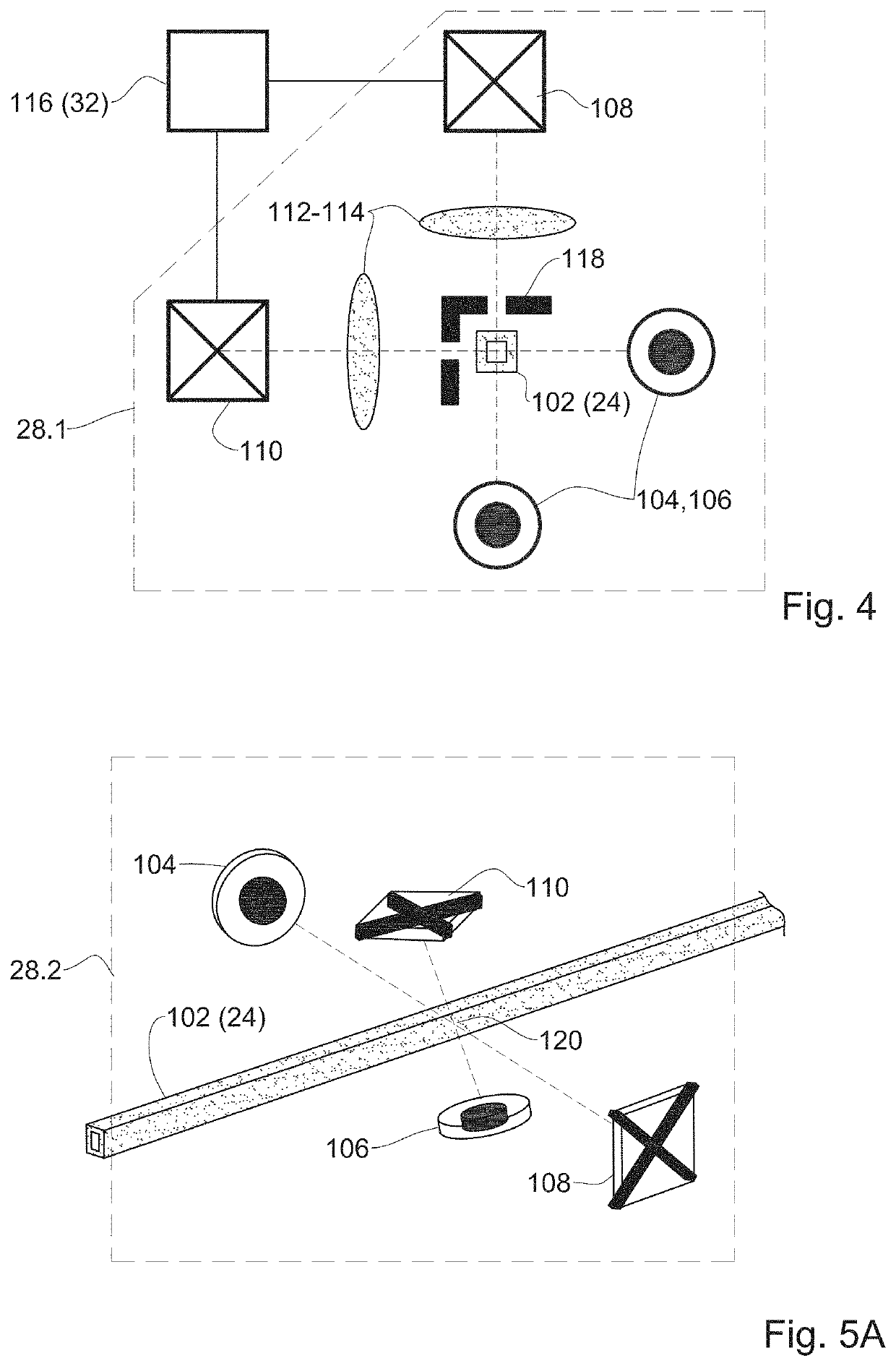Optical technique for analyzing insects, shrimp and fish
an analysis technique and shrimp technology, applied in the field of image-based detection and classification, can solve the problems of inability to easily apply high throughput, difficult to determine their presence, color, morphology, size and shape, and significant amount of time to collect multiple images
- Summary
- Abstract
- Description
- Claims
- Application Information
AI Technical Summary
Benefits of technology
Problems solved by technology
Method used
Image
Examples
example 1
for Sex-Sorting of Fish
[0307]An exemplified sex-sorting system essentially is based on the following: fish larvae or fries or fingerlings or adults are kept in their natural environment, namely, water. Unsorted fish flow, under pressure or gravity, towards the outlets of the system. The inner dimensions of the flow channel were chosen such that only a single fish can pass at a time. Furthermore, these dimensions constrict the fish to extend parallel to the channel walls. The temperature of the liquid may also be cooled so as to reduce wriggling movements. As the fish pass through a classification region, they are imaged.
[0308]Additional Optional Features:
[0309]Aqueous medium used to flow the fish (typically water) may be cooled in order to reduce their movements during the sorting process.
[0310]The unsorted fish may be kept dispersed in the liquid before entering the sorting system through agitation. This may help fish enter the system one by one and at a constant rate.
[0311]A senso...
example 2
riteria
[0327]In some embodiments of the technique, the viability of an organism is determined by its light absorption pattern, i.e., its general opacity and the level of uniformity in light absorption. In most cases, but not exclusively, live organisms are less opaque (less absorptive) and less uniform in their absorption profile than dead ones.
[0328]In other embodiments, the growth potential of an organism is determined by a combination of its overall size and shape (e.g., width to length ratio) and / or number of specific structures like head and mouth parts.
[0329]In further embodiments, the health of an organism is determined by its color under a broad spectrum illumination. The observed color and color ratios of the organism are partly the result of light refraction characteristics of its exterior and / or morphological signals such as the presence or absence of structures caused by disease or the organism's response to a pathogen, or a combination thereof.
[0330]In embodiments where...
PUM
 Login to View More
Login to View More Abstract
Description
Claims
Application Information
 Login to View More
Login to View More - R&D
- Intellectual Property
- Life Sciences
- Materials
- Tech Scout
- Unparalleled Data Quality
- Higher Quality Content
- 60% Fewer Hallucinations
Browse by: Latest US Patents, China's latest patents, Technical Efficacy Thesaurus, Application Domain, Technology Topic, Popular Technical Reports.
© 2025 PatSnap. All rights reserved.Legal|Privacy policy|Modern Slavery Act Transparency Statement|Sitemap|About US| Contact US: help@patsnap.com



